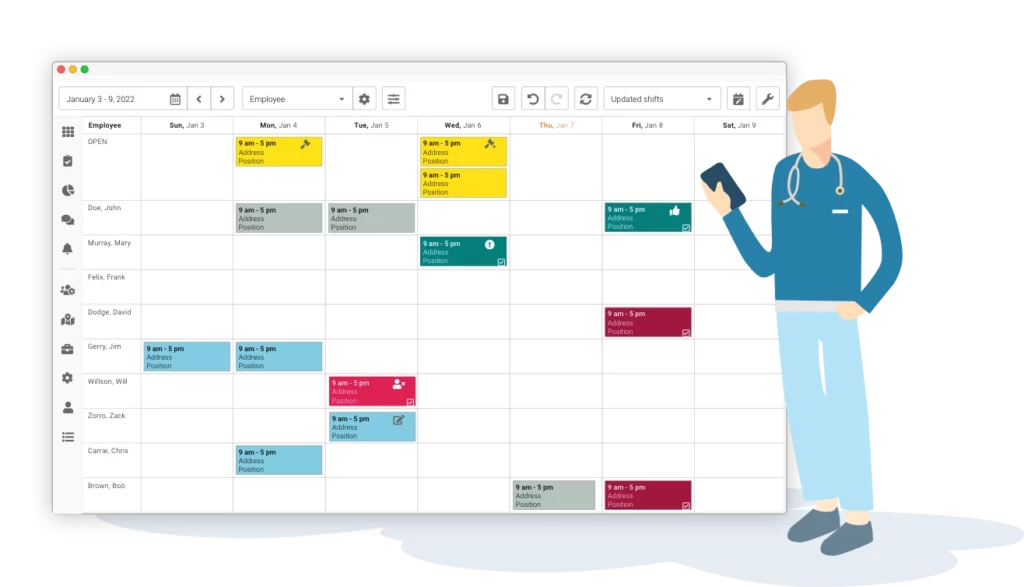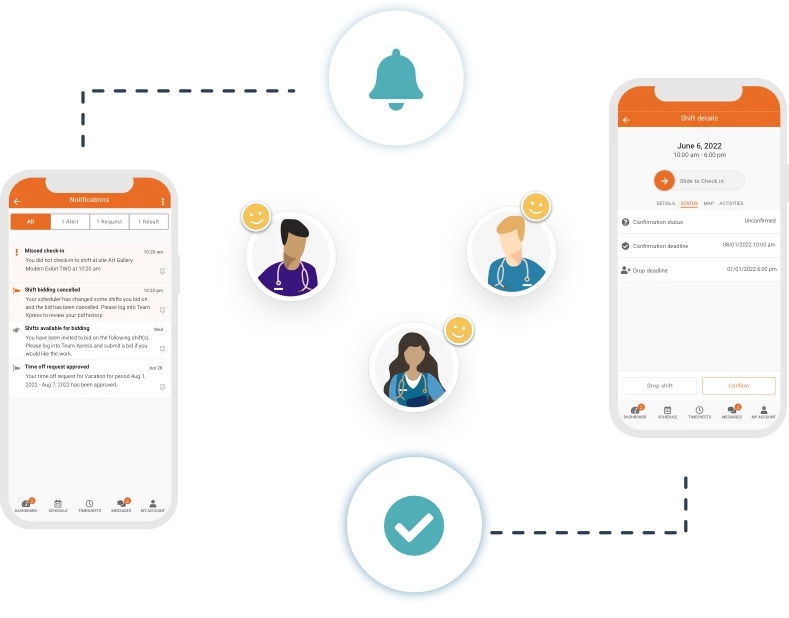As a manager, keeping on top of caregiver scheduling can be daunting. Not only do you have to coordinate your schedule with the person you are caring for, but you also have to take into account the schedules of other caregivers.
According to a study by the National Alliance for Caregiving, approximately 34.2 million Americans have provided unpaid care to an adult or child in the last 12 months. With such a large number of caregivers, it’s essential to have a system to manage schedules effectively. With the right approach and tools, you can master caregiver scheduling and ensure that everyone is happy.
Importance of Caregiver Scheduling

Caregiver scheduling is critical in providing care for those unable to undertake everyday duties independently, such as the elderly or those with disabilities. A well-planned home care schedule ensures that the person receiving care has the assistance they require when they require it. It also ensures that the carer can manage their workload sustainably and effectively.
CONTINUITY OF CARE
One of the main reasons that caregiver scheduling is important is that it helps to maintain continuity of care. When a consistent routine is in place, the person getting care becomes acquainted with the carer and can develop a trusting connection with them. This continuity of care can assist in reducing disruptions in the care process and improve the individual’s overall well-being.
- According to research conducted by the National Alliance for Caregiving and AARP, approximately 90% of family carers are in charge of arranging and coordinating care for their loved ones. This emphasizes the need for a well-planned timetable to ensure success.
- According to a National Alliance for Caregiving survey, family carers spend an average of 20 hours per week providing care.
CAREGIVER WORKLOAD
- According to the United States Bureau of Labor Statistics, there are approximately 40 million unpaid carers in the United States alone who provide care to persons over the age of 18.
- A National Family Caregivers Association study found that nearly 60% of family caregivers report feeling overwhelmed by their caregiving responsibilities.
- According to a National Alliance for Caregiving research, family caregivers provide care for an average of 4.3 years.
Another essential element of caregiver scheduling is that it aids in the management of the caregiver’s workload. Caregiving may be physically and emotionally taxing. A well-planned schedule can ensure that the carer can take breaks and relax when necessary. This can assist in minimizing burnout and ensure that the carer provides the best care possible.

IMPROVE EFFICIENCY
- According to a National Council on Aging research, family caregivers provide an estimated $470 billion in unpaid care each year.
- A study by the AARP Public Policy Institute found that nearly one-third of family caregivers have to rearrange their work schedules to accommodate caregiving responsibilities.
Furthermore, daily schedules can aid in improving the overall efficiency of the care process. A timetable allows the caregiver to plan and prepare for the chores, saving time and energy. This is especially critical when the care recipient has complicated needs or requires specialized care.
How to master caregiver scheduling
PLAN AHEAD:
The first step in mastering caregiver scheduling is to create a master schedule. This plan should contain all necessary caring duties and the times they must be accomplished. If the person you care for needs medicine at 8 a.m., 12 p.m., and 8 p.m., those times should be mentioned in the master schedule. You’ll be able to properly arrange and assign work among carers if you have a clear picture of what needs to be done and when.
ASSIGN RESPONSIBILITIES:
Assign tasks and shifts to individual carers once you’ve created your master schedule. This will guarantee that everyone understands their roles and when they are expected to be on duty. For example, you can delegate drug administration to one carer during the day and another at night. You’ll be able to provide the finest care for the individual you’re caring for if you explicitly designate tasks.

COMMUNICATION IS KEY:
Effective communication is essential for mastering carer scheduling. According to the National Family Caregivers Association, effective communication can lower carer stress by up to 30%. Ensure that all carers can communicate with one another and know whom to call in an emergency. Create a group chat or email thread for all carers to share and discuss scheduling adjustments.
BE ADAPTABLE:
Plans change, and being adaptive is essential for managing caregiver scheduling. According to the National Alliance for Caregiving, around 70% of carers have had to change their work schedule to suit caregiving commitments. Being able to adapt to changes will ensure that everything runs smoothly. If the person you’re caregiving for has a doctor’s appointment, you’ll need to change the schedule and ensure that a carer is available to accompany them.
USE SCHEDULING SOFTWARE:

Using scheduling software can simplify the employee scheduling process. The National Alliance for Caregiving found that roughly 25% of carers utilize technology to manage caregiving chores. Not only can it create a caregiver schedule in minutes, it enables carers to quickly examine the schedule, request time off, and exchange shifts through the mobile app. To organize the schedule and connect with other caregivers, for example, you can use a scheduling tool like Celayix.
Managers can also use open shifts to provide flexibility to caregivers. Open shifts can be claimed in real time with self scheduling or shift bidding. This gives caregivers the work life balance they strive for.
By following these tips, you’ll be able to master caregiver scheduling and ensure that everyone is taken care of. With a well-coordinated schedule, you can focus on providing the best possible care for the person you are caring for. Don’t let scheduling be a source of stress. With the right approach, it can be manageable.
Benefits of Caregiver Scheduling
CONSISTENT SCHEDULE
A consistent schedule can assist in enhancing the individual receiving care’s overall quality of life. If an older person is accustomed to taking medication at a specific time each day, breaking from that plan might cause confusion and disorientation. A routine can assist in reducing disturbances in the care process and improve the individual’s general well-being.
PREVENT EMPLOYEE BURNOUT

Caregiver scheduling can assist in reducing carer burnout and guarantee that the carer can deliver the best care possible. For example, a carer responsible for 24-hour care may need to pause throughout the day to relax and recharge. A timetable can help ensure that the carer can take breaks at suitable times, preventing burnout and improving the overall quality of care.
IMPROVE COMMUNICATION BETWEEN CAREGIVER AND RECEIVER
Caregiver scheduling may aid in improving communication between the caregiver and the client receiving care and between the carer and other care team members. For example, if a carer is in charge of caring for a dementia patient, having a consistent plan in place might assist in conveying when particular chores, such as bathing or medication administration, will occur.
REDUCE COSTS
Caregiver scheduling can also aid in the management of total care costs. For example, if a carer can plan and prepare for the chores that must be completed, they can save time and energy, lowering the overall cost of care. A timetable can also assist in ensuring that the individual receiving care receives the proper treatment at the right time, reducing the need for unnecessary or costly interventions.
Conclusion
Caregiver scheduling is critical for ensuring that both the client receiving care and the carer can manage their workload sustainably and effectively. It aids in ensuring continuity of care, addressing the caregiver’s workload, and improving the overall efficiency of the care process.
The examples and data presented above show that having a well-planned schedule in place may improve the quality of care delivered, the well-being of the individual receiving care, and the workload and well-being of the carer.





